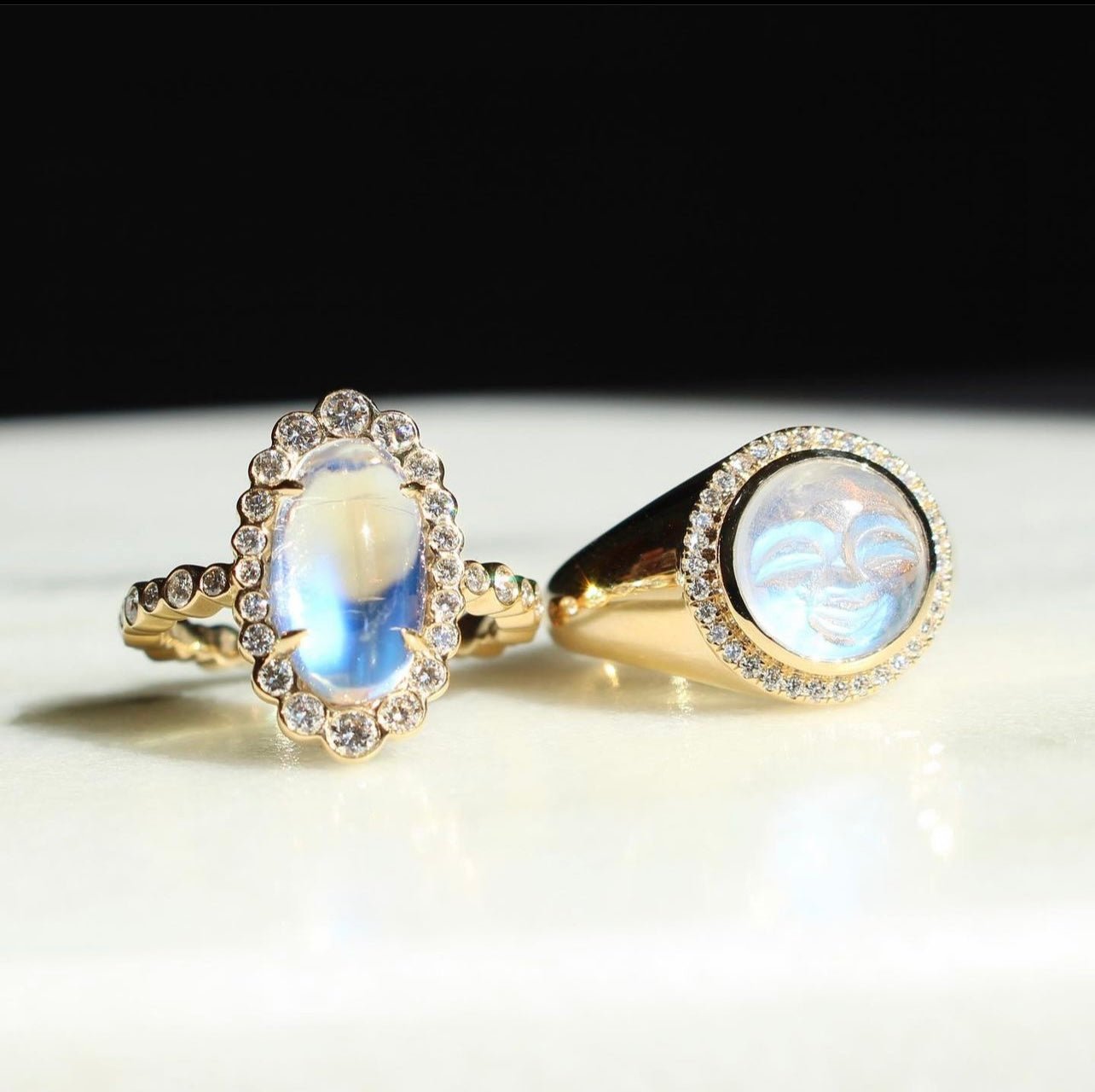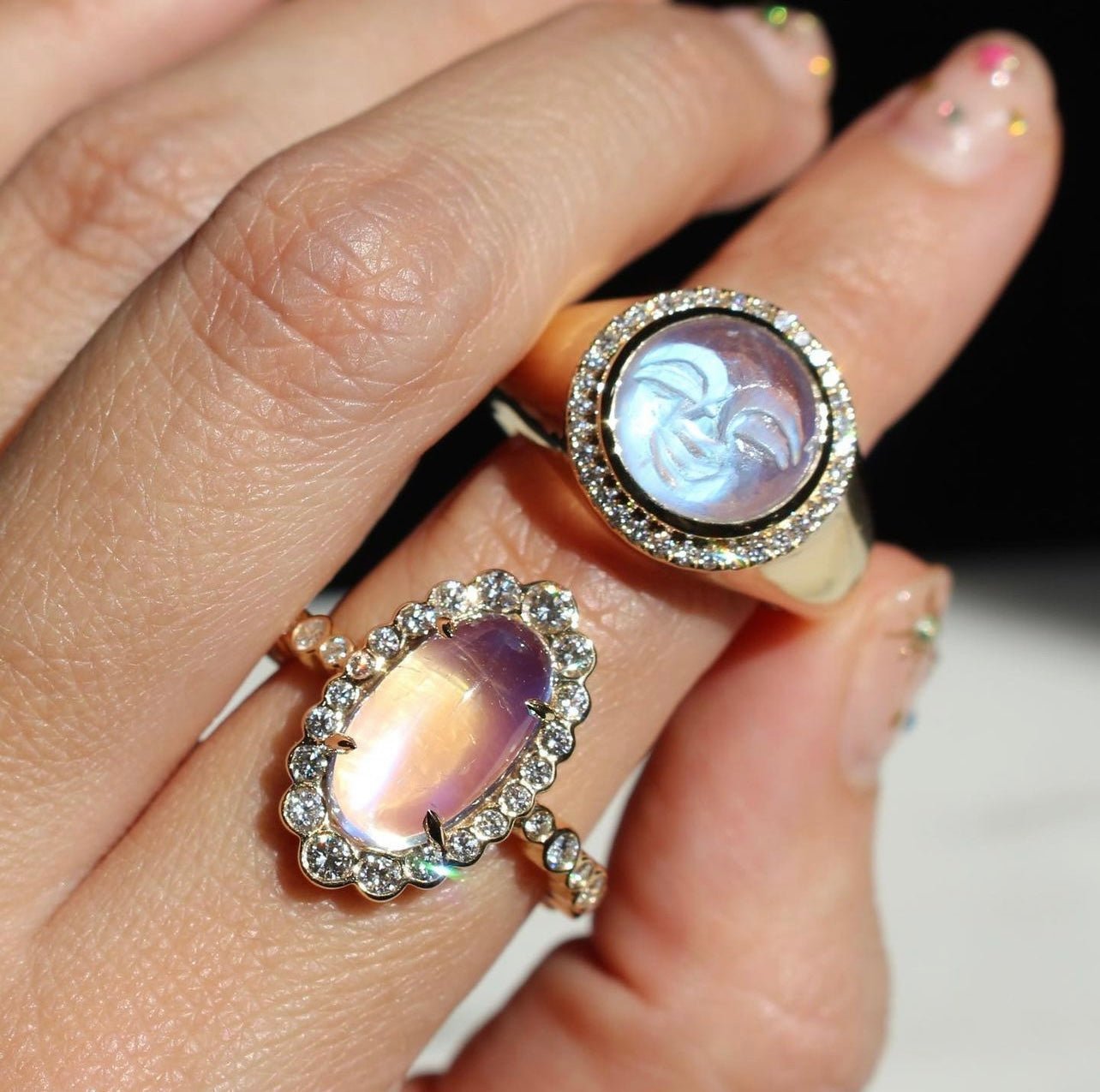It can be tricky to hold a diamond in your hand and guess its value based on vision and touch alone. Most of the components of a gem’s grading are found through microscopic analysis. These gradings are a lengthy process that takes expert levels of care.
Both diamond color and clarity are just two of the four properties used to determine what a diamond is truly worth. That antique diamond ring stowed away in the back of your closet? It may not have the price tag you’ve been told it does because modern laboratory metrics look much closer at diamond properties than the grading of yesteryear.
To ensure that you’re getting what you pay for and that your jeweler is giving you a fair deal, you should know about diamond properties. With this knowledge, you can advocate for yourself as a consumer and also weed out poor-quality diamonds easily.
At Mark Henry Jewelry, we are committed to bringing you only the finest diamonds, and full transparency in sharing this information should put any worries to ease!
What Makes Diamonds Special?
Diamonds, while less rare than other fine and exotic gemstones, hold a rightful place in the jewelry world. They are champions of mining booms throughout history and have long symbolized wealth and prosperity.
Over the past centuries, beginning in the 1400s with one very special royal proposal, diamond engagement rings have been popular. Through this practice, diamonds have come to symbolize everlasting love and commitment. They are thought of by many as the ultimate token of appreciation and romance.
Since diamonds are so common in jewelry, it is good practice to know how their quality is determined. It is likely that you will either be gifted a piece of diamond jewelry or inherit one throughout your lifetime. Expanding your knowledge on its value only increases your chances of getting the appraisal you desire in the future.
Lab Grading for Diamonds
Diamond grades are given by professional laboratories and trained gemologists. You can seek privatized grading from second-hand companies as well, but we advise against this. The two most reputable laboratories to get your grading from are the Gemological Institute of America and the American Gemological Society.
At Mark Henry Jewelry, we like to use the GIA grade reports. They are concise and among the best of the best. All of our jewelry comes with these grades and does not require additional payments to see the report. We also provide a certification along with the grade report as a means of guaranteeing your diamond is of high quality.
What Are the 4Cs?
While both the GIA and AGS have handy rating scales that inform their diamond grading, GIA was at the forefront of the movement. This is another reason why we value their expertise.
The GIA developed the 4Cs method in 1949, zeroing in on the following factors of a diamond: color, cut, clarity, and carat. It was believed that the combination of various grades in these properties would make a solid overall grade to convey the quality of the diamond.
AGS favors a numbered approach from 0-10 for each metric grade. They believe that with 0 being the best and 10 being the worst, the average jewelry consumer can understand the overall quality of the diamond instantly.
GIA utilizes specific word-centered labels for these scales, and we’ll delve into each one individually. They vary depending on which property is being graded.
Color
Diamonds are typically more desirable when they are as close to colorless as possible. Due to this, diamond color scales favor pieces without visible color. If you own a diamond that has an obvious colorful tint, it is less likely to rank well on this metric.
Fancy-colored diamonds (those with vibrant and unique hues) are graded on a separate scale.
Cut
The cut of a diamond helps to bring out its natural brilliance and shine. The way that a diamond allows light to bounce off of it and through it is all down to how it is cut. Brilliant cuts are favored for most diamonds. The GIA runs this scale with “poor” being the worst cut grade and “excellent” being the best.
Clarity
A diamond’s clarity is imperative to how transparent or “see-through” it is. Inclusions and blemishes can cloud up the stone itself, making it look foggy or dilute its brilliance. Diamonds should have the least amount of inclusions possible, especially when they occur internally.
Carat
A carat is a unit of measurement that conveys a diamond’s weight. Some diamonds may be large in carats but poor in other quality factors. This doesn’t mean they inherently are worth a lot of money. This factor matters the least out of the four.
Explaining the GIA Color Scale
The GIA color scale ranges from D-Z, with a D diamond being colorless and a Z diamond being lightly tinted yellow or brown. Most consumers dislike the latter part of the scale because they view these diamonds as poor quality.
D diamonds are incredibly rare to come across, but E-G diamonds are more common and nearly completely colorless to the eye. They easily pass off as colorless diamonds without magnetization and are a great in-between for those on a budget who still want that enchanting appearance.
Fancy Colors and Scales: Rarity
Fancy-colored diamonds are diamonds with hues outside of yellow or brown tints. Yellow diamonds can be considered fancy colored if they have a bright tone, like canary yellow pieces.
Most of these intriguing colors are due to boron and nitrogen impurities, among other chemical differences. These are not equivalent to a Z color rating — in fact, they have a scale all their own.
The rarest diamond color is the red diamond, which is famed for its gorgeous and mesmerizing hue. There are only about 20 or 30 red diamonds known to the gemologist community that are up to gem quality. Red diamonds have no impurities, and their color is thanks to the carbon and warping in their atoms.
Colorful Diamonds: Hue, Saturation, and Tone
It is good to also consider hue, saturation, and tone when it comes to intentionally colorful diamonds. Fancy-colored diamonds are judged similarly to gemstones. Both must meet certain color requirements for vividness and depth. A fancy-colored diamond that has poor saturation is less valuable than one that is deeply saturated and bright.
What Does Clarity Mean?
Diamond clarity, an index of how many inclusions and blemishes a stone has, is paramount to the total quality of a stone. In the GIA scale, clarity is measured from Flawless (F) to Included (I3). The entire scale features breakdowns of Flawless, Very Very Slightly Included 1 and 2, Very Slightly Included 1 and 2, Slightly Included 1 and 2, and Included 1, 2, and 3.
The differences between grades of VVS2 and VS1 may seem minuscule, but they do matter. A VVS2 diamond has inclusions that are hard to see even when they are magnified 10x.
A gemologist with 10x magnification tools can find inclusions in a VS diamond slightly faster, but it takes some effort. Neither VVS, VS, nor SI diamonds have internal or external impurities that can be seen without the help of a magnifier.
While an eye-clean stone is preferred, it is important that your diamond has the least amount of inclusions possible. Blemishes can usually be fixed with cosmetic interventions, but inclusions can make your diamond prone to fissures and cracking over time. This is a poor investment, even if the piece is classified as Slightly Included and still “eye clean.”
Inclusions in Gemstones Vs. Diamonds
Remember that gemstones and diamonds are mostly different beasts when it comes to these grading scales. Inclusions in gemstones can sometimes be seen as beneficial and part of the design quality.
For example, “centipede” line inclusions in moonstone might make the piece slightly less expensive but are favorable for certain collectors. They add to the unique qualities of the gem and give it dimensionality.
Is Color More Important Than Clarity?
When we compare the color and clarity of diamonds, they are always listed in the same order of importance. Both the GIA and the AGS scales place color before clarity. When it comes down to it, these factors are only as interchangeable as they are to the consumer.
Preference is Key
Every customer is different, and so are their needs. One person may prefer a completely flawless diamond but doesn’t mind if their stone has slight tints of color and a poor color grading.
This may force them to go based on what they see more than what they read. Consequently, jewelry collectors who care about how their diamonds look may fail to delve into the fine print of a grade report.
Industry Standard
Why not have it all? At Mark Henry, we promise that you’ll never have to sacrifice lack of color for pure clarity.
Whether you sport a diamond or the hyper-rare alexandrite, the sparkle love is guaranteed to have the substance you demand.
Sources:
A Complete Guide to Diamond Clarity | Brides
Learn How to Buy a Diamond with the GIA Diamond Buying Guide | GIA
Discover the History & Traditions of Diamond Engagement Rings | American Gem Society

